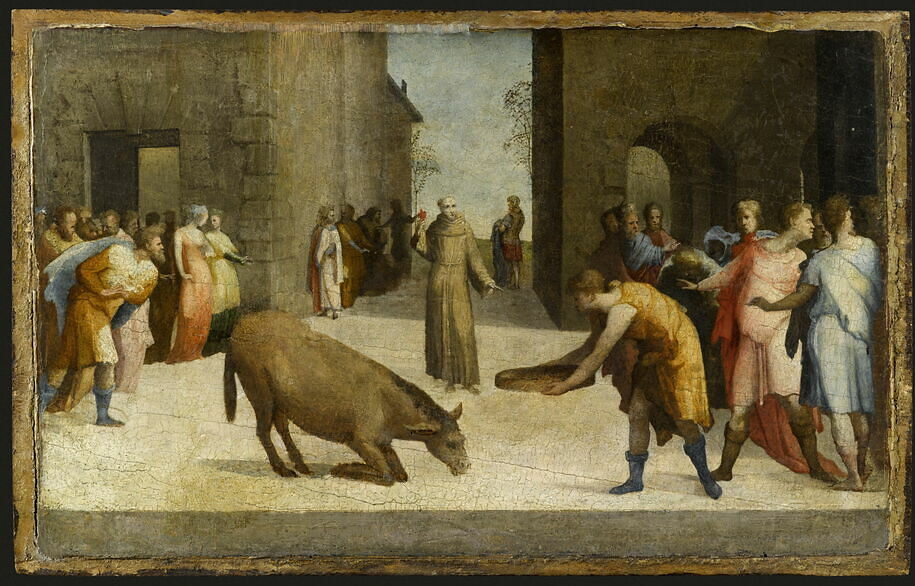
Mule where are you from?
The origin of mules and mules is hidden from us by the impenetrable veil of the dawn of time.
Its existence implies the simultaneous presence in the same country of the horse and the donkey.
The historical documents bequeathed to us by the East allow us to go further back into the past of these animals, the writings left by the Latin authors lack precision, they confuse in the generic name of "Jumenta", all of the beasts of burden and harness making up army convoys.

The mule often appears in ancient Assyrian bas-reliefs, and according to Mr. Pietrement, the first oriental mules must have originated in the Asian regions between the Ganges and the Mediterranean coast of Syria. This is where Asian horses (Mongols) first encountered African donkeys.
In the Annals of the Kings of Assyria, mules are frequently mentioned around 1200 BC.
Among the Hebrews, during the time of King David (10th century BC), the mule was the usual mount for the leaders of Israel. After the murder of their brother Amnon, David's sons each fled on a mule. After David's reign, the Bible often makes reference to mules.
Homer (800-740 BC) provides many details establishing the antiquity of their existence in Asia Minor and Greece. Mules were sometimes offered as gifts, indicating their high regard.
Herodotus (480-425 BC) tells us that the Persians used mules in their wars against the Scythians. Their braying and long ears startled the Scythian horses, a phenomenon still constant in the horse world today.
Mules were present at the siege of Babylon.
Xerxes, the Persian king, also used them when fighting against the Greeks.
Diodorus informs us that Alexander the Great (356-323 BC) brought a multitude of pack and harness mules from Babylon.
Diodorus of Sicily, a Greek historian from the 1st century BC, shows that three centuries after Aristotle, there was an absence or at least extreme rarity of donkeys and mules among the Gauls of the English Channel coast. It was horses that were used.
The domestication of the European donkey dates back to the Hispanian center, around the polished stone age.
Pliny (23-79 AD) talks about donkeys used for plowing but whose main purpose is to produce mules. Moreover, the term "Mulus" was used for the mare-donkey hybrid, and "Hinnus" for the mule, a root preserved by the Anglo-Saxons, where "bardot" translates to "Hinny."
According to Mr. Pietrement, the oldest precise date indicating the use of mules in the West goes back to 534 BC. It was during the Gallo-Roman period that the animal spread across Europe.
In Italy, the papal court's etiquette did not allow for mutilated subjects to be used in harnessing. The disobedience of male mules was a hindrance to their use, leaving only mules for the Pope's carriage.
Italian nobles adjusted their own etiquette to that of the pontiff, riding mules instead of mulets.
According to Mr. Sanson, in Italy, mules make up half of the equine population. In the Iberian Peninsula, they exceed this proportion.
In Spain, mule breeding competed with horse breeding for a long time. The proliferation of mules had nearly wiped out the good horse breed in the two Castiles, Asturias, and Galicia.
Mules were exclusively reserved for luxury carriages; those of Philip V, King of Spain (1663-1746), consisted of six coaches drawn by six mules.
20,000 mules passed from France to Spain each year, and it was during Joseph Bonaparte's reign that the use of horses became widespread.
In Pau and Biarritz, wealthy Spaniards who came for the season brought splendid teams of mules.
In France, mule breeding was introduced from a very distant period, thanks to the Saracens, who were later defeated by Charles Martel at Poitiers.

In 1498, Louis XII and his retinue went on a pilgrimage from Chinons to Angers, with
teams of mules and horses. Louis XII himself rode a mule.
In France it was the army in the 17th, 18th, 19th centuries that would be in great demand for mules, Napoleon crossed the Alps on his mule.
Civilian mules are used almost everywhere in the French mountains for transport and agriculture. Demand is therefore strong and entire regions specialize in breeding mules and mules: Poitou, the south east, the Pyrenees, the south of the Cévennes and Franche-Comté.
In the middle of the 19th century, the French “mulasse industry” was powerful and heavily exporting.
The arrival of motorized vehicles has caused this animal to fall into disgrace; no one needs it anymore, despite a still significant presence in Greece, Italy and Spain. However, they have retained an important place on the American continent, North and South.
Napoléon a franchit les Alpes sur sa mule.

Ref- La grande histoire du mulet. A.Guenon Édition du vieux crayon- Mémoires des ânes et des mulets Gérard Rossini Édition Équinoxe
For further :
A big job: https://core.ac.uk/download/pdf/20655454.pdf
The mule in the Middle Ageshttps://books.openedition.org/pus/12985?lang=fr&fbclid=IwAR3cjyER0RafOF-57VMp72G7Tr9W1mVMR-wlzMbaPMhqDfIAvUEK27MYil0

Comments